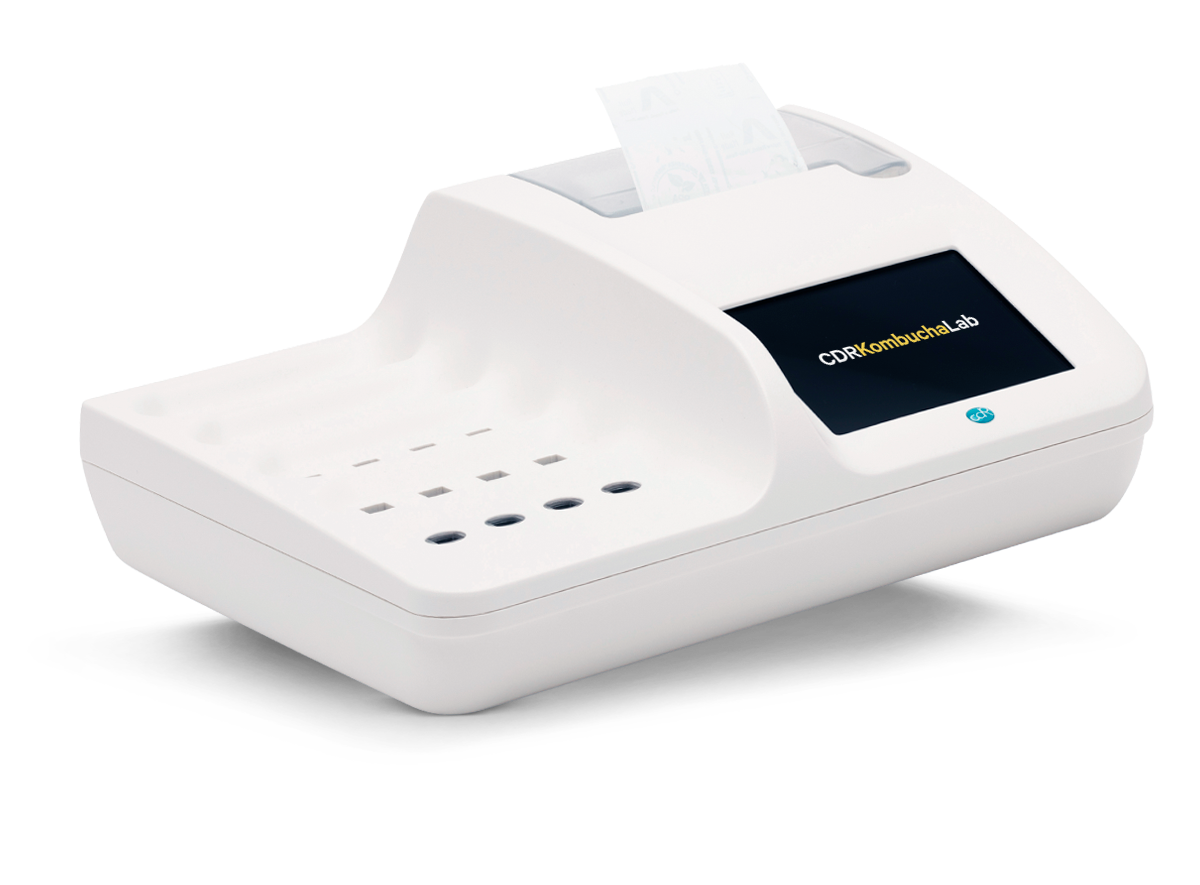Determination of the Gluconic acid in Kombucha
During fermentation the symbiotic culture of bacteria and yeasts promotes the formation of various organic acids. Of these, gluconic acid plays a very important role because it is associated with the detoxification of heavy metals in the human body, having a significant impact on the organoleptic level. It is therefore essential to monitor it, not only during the fermentation process of the tea, but also, and above all, in the finished product in combination with acetic acid.
Method
Test Principle
Gluconic acid is phosphorylated through the action of a suitable enzyme in the presence of ATP. The adduct formed through the action of NAD+ results in the formation of NADH in a 1:1 ratio with the gluconic acid present in the sample. The end point reaction is measured at 366 nm and the increase in absorbance is directly proportional to the concentration of gluconic acid.
Calibration Curve
The calibration curve of the CDR KombuchLab instrument, obtained by comparing the CDR method with the enzymatic method for the determination of gluconic acid, confirmed an excellent linearity of the system over the entire measurement range.
...
Reagent test Kits
Measuring range
| Analyses | Measuring range | Resolution | Repeatability |
|---|
The Analyzers for process and quality control in kombucha brewing
CDR KombuchaLab
- Complete analysis panel, supplied already configured
- Up to 16 determinations simultaneously
- Possibility of carrying out analyses of the same sample
- Integrated printer
- Full connections (LAN - USB - Bluetooth barcode/QR code reader)
CDR KombuchaLab Jr
- Partial analysis panel, supplied configured with 3 analyses of your choice, implementable
- Up to 3 determinations simultaneously
- Wireless connection to external printer
- USB connections
